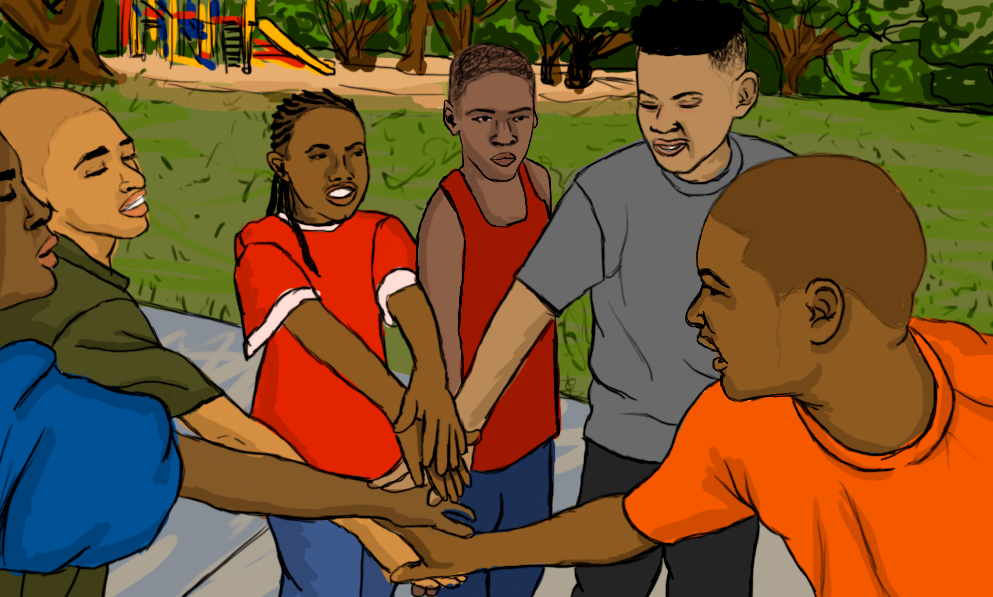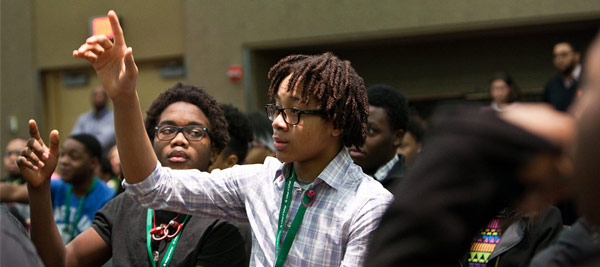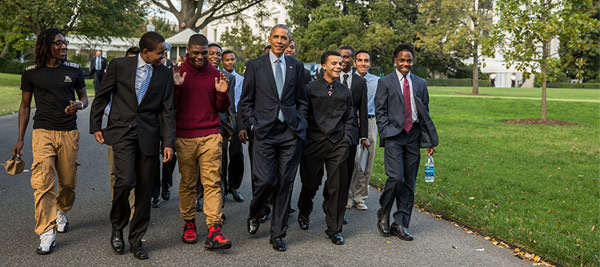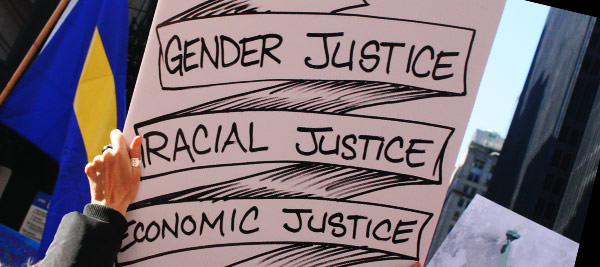When They See Us: Improving the Media’s Coverage of Black Men and Boys

This memo is intended to help journalists and media organizations produce fuller and more accurate reporting on African-American boys and men while reducing bias and stereotyping in their coverage. It is designed to inform coverage around the release of the new film, When They See Us, and the 30th Anniversary of the Central Park Five case in 1989.
The Central Park Five case involved the assault and rape of a white female jogger and the wrongful arrest and conviction of four African-American and one Latinx teenager—Kevin Richardson, Antron McCray, Yusef Salaam, Kharey Wise, and Raymond Santana—for the crime. The young men spent between 6 and 13 years in prison before being exonerated in 2002 when another man confessed to the crime.
Created by Ava DuVernay for Netflix, When They See Us, depicts the story of the Central Park Five and highlights how biased media coverage and harmful stereotypes contributed to the young men’s unjust incarceration.
Why Coverage Matters
Media coverage powerfully shapes the ability of individuals and communities to receive fair and equal justice. Politicians, prosecutors, police, juries, and everyday people are influenced not only by the facts reported in stories, but also by the images, labels, framing, and narratives that those stories convey. Decades of research reveal a persistent trend of distorted media depictions of Black men and boys that contribute to negative stereotypes, inequitable treatment, and unequal opportunity in areas ranging from employment, to education, policing and sentencing.
Research by The Opportunity Agenda1 reviewing hundreds of studies over several years found: that news coverage and other media depictions overrepresent Black boys and men in stories of violence, crime, and poverty; underreport important dimensions of Black males’ lives, such as fatherhood and work; and lack coverage of systemic barriers facing members of this group. The research further found that distorted media depictions can lead to negative attitudes toward African-American boys and men, such as increased public support for punitive approaches and tolerance for racial disparities. Subsequent research on depictions of African-American families2 similarly found that news and opinion media significantly overrepresent the association between Black families and criminality while significantly underrepresenting White families’ association with criminality.
Improving the Quality and Accuracy of Coverage
The release of Ava DuVernay’s When They See Us and the 30th anniversary of the Central Park Five case represent a moment for national reflection and coverage, not only on the show and wrongful convictions, but also on the societal and media biases that allowed that tragedy to happen. Based on our research and analysis and best practices from the journalism field, The Opportunity Agenda recommends six ways that news outlets and journalists can more accurately portray Black life and adhere to the media’s fundamental role in informing the public and furthering our democracy.
- Acknowledge and Review for Bias. Research shows that we all harbor subconscious or implicit racial and ethnic biases that do not necessarily align with our stated beliefs. Those biases can enter into reporting in the form of stereotyped vocabulary, images, framing, and story choice. Assumptions about people and neighborhoods that are “dangerous,” “violent,” or deserving/undeserving of attention are just a few examples. Reviewing story choices and content for tropes and stereotypes is important to quality reporting. The Perception Institute3 and Harvard’s Project Implicit4 provide two useful starting points for assessing unintentional bias.
- Look at the Big Picture. Monitor the amount of coverage, type of coverage, and the nature of the coverage that different communities, topics, and types of sources receive. Who is quoted as an expert? With whom is the reader or viewer supposed to identify? Are African-American individuals and communities featured, and if so in what roles? A quarterly review of stories in the aggregate can reveal and address trends of bias or stereotypes that are not readily apparent when consuming stories one at a time.
- Foster Diversity. One of the factors that media scholars see as contributing to distorted and incomplete coverage is the paucity of African-American media owners, producers, journalists and experts invited to contribute content. Encouraging diversity and inclusivity at every stage of the media content process will make it far more likely that varied experiences and fresh perspectives are incorporated.
- Cover Obstacles as Well as Outcomes. Research shows that stories about the unique and disparate obstacles facing African-Americans are few and far between—giving many news consumers the impression that these individuals simply lack the drive, honesty, or talent of their white counterparts. Provide audiences with the information and context to make informed decisions about causes and solutions. And before reporting on unequal outcomes in criminal justice, for example, consider explaining the documented inequities in policing, prosecution, and sentencing, and opportunities to re-enter society that African Americans frequently face.
- Capture the Missing Stories. In addition to stories about systemic obstacles and solutions, media analysts find a paucity of stories featuring African-American boys and men who are workers, problem solvers, innovators, or even users of technology. Those underreported stories can break through the clutter while avoiding the stereotypes found in a large volume of past reporting.
- Be Responsive and Accountable. In-person engagement and digital input from diverse communities are crucial to finding and telling fresh, accurate stories that reflect a diversity of lived realities. They are also critical reality checks on tired tropes or inaccurate storylines. Soliciting and listening to community and audience input is another crucial tool for full and accurate journalism.
Conclusion
As When They See Us makes clear, improving the quality of media coverage of Black men and boys is critical because the stakes are so high. Distorted media coverage and portrayals contribute to the perception that Black men and boys should be viewed as threats and burdens instead of valued and participating members of our society. Those perceptions play out in our justice systems, in employment, in education, and in other contexts that are crucial to opportunity, health, and happiness.
Through full and accurate reporting, journalists can counter these trends and be part of the solution. Just as individual stories must be fair and accurate, we hope that patterns of distorted reporting will trigger changes in story assignment, reporting, and editing practices.
1 The Opportunity Agenda, Social Science Literature Review: Media Representations and Impact on the Lives of Black Men and Boys (2011), https://bit.ly/2H551mm.
2 Travis L. Dixon, “A Dangerous Distortion of Our Families: Representations of Families, by Race, in News and Opinion Media.” (2017). https://bit.ly/2z9ST0Y.
3 https://perception.org.
4 https://implicit.harvard.edu.





